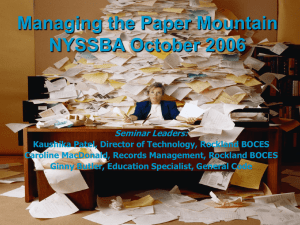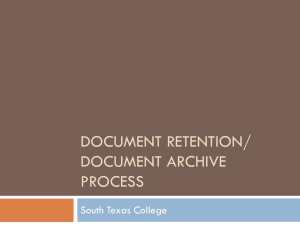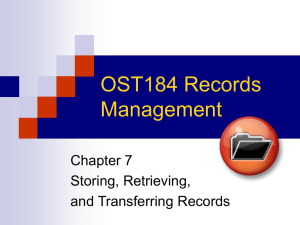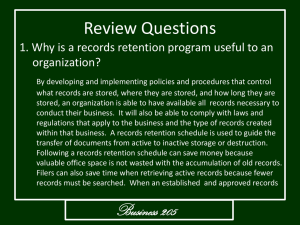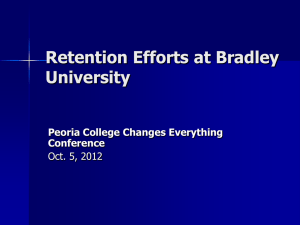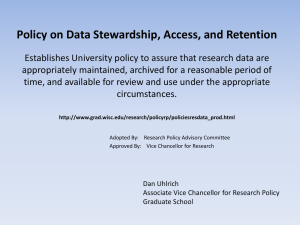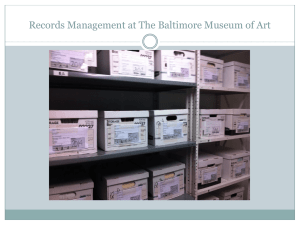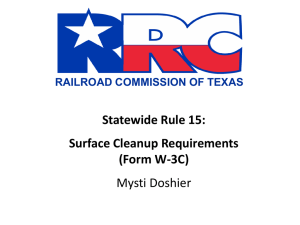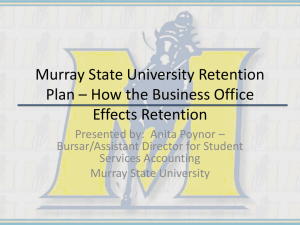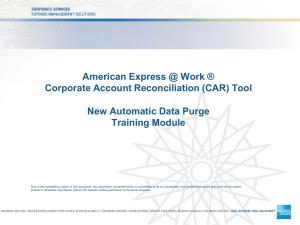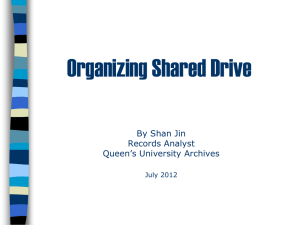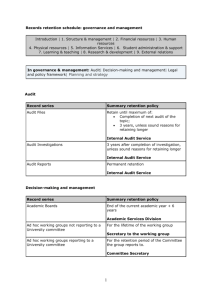1. Creation of Record
advertisement
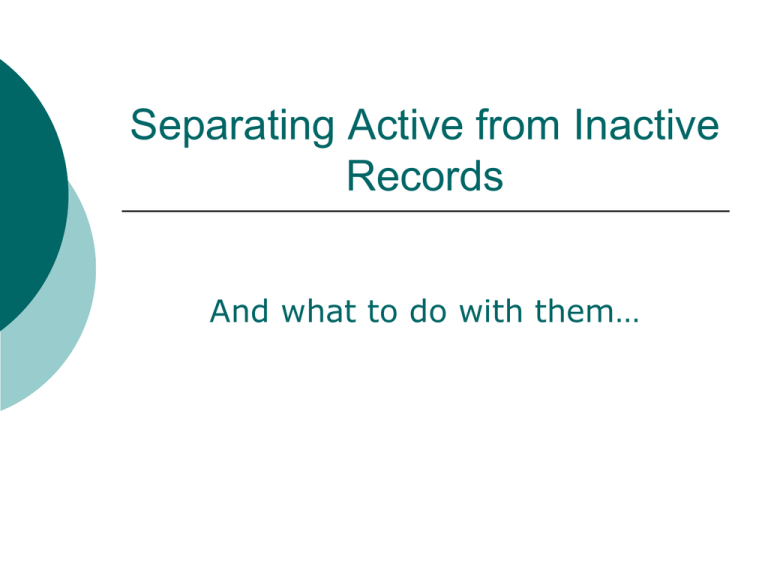
Separating Active from Inactive Records And what to do with them… Basic Records Management Review What is a record? Official vs. Unofficial Record Records Retention Schedule Records Group Retention Period Retention Event Record Life Cycle 1. Creation of Record (or receipt of record from outside University) 2. Distribution Who gets the record? Internal or External 3. Use Decisions Reference Inquiries Legal Requirements 5. Disposition Transfer Retain OR Destroy 4. Maintenance Store/File Retrieve Protect Record Life Cycle Disposition Official records vs unofficial records Permanently Retain Send to University Archives Shred Dispose Active vs. Inactive Records Active Record A record needed to perform current operations, subject to frequent use, and usually located near the user and accessed often Inactive Record A record no longer needed to conduct current business but preserved until it meets the end of its retention period. Rarely accessed. Separating Inactive from Active Perpetual Transfer Method Periodic Transfer Method Perpetual Transfer Method Files are continually transferred from active to inactive storage areas Examples: Student records postgraduation, closed legal cases, finalized research projects, employee files posttermination Implementing the Perpetual Transfer Method Set aside an “inactive file” cabinet or shelf Set up an off-site storage account with vendor Move files immediately upon graduation/termination/closure Mark files with end of retention period date Purge “inactive file” area on a regular, pre-determined basis Periodic Transfer Method Transfer of active records at the end of a stated period of time Typically done once or twice a year Examples: Financial records, records to be transferred to University Archives Implementing the Periodic Transfer Method Mark files with creation date, fiscal year, or calendar year Keep all records from same time period together Decide how often you are going to transfer records (annually, bi-annually, etc) Transfer records at end of time period to inactive storage (within the department or off-site) or to the University Archives as appropriate Mark records transferred to inactive storage with destruction date Review and purge stored records on a regular basis Implementing Either Method Set up your filing system to reflect the Record Groups on the Records Retention Schedule Examples: Meeting Minutes, Annual Reports, Student Files, Faculty Applications, Publications Things to Remember Only official university records should be stored or transferred in these manners. Unofficial records should be disposed of once your office no longer needs them to do business Unless records are marked as “Permanently Retain” or “Send to University Archives” on the Records Retention Schedule, any records that have met their retention event should be marked with a destruction date If you are unsure of the destruction date or retention period for your records, contact the Records Management Department before storing or destroying them Helpful Tip! The methods we discussed today can be applied to electronic records too! Contact Information Erin Vandenberg Director of Records Management evanden3@depaul.edu 312-362-7941 55 E Jackson, Suite 850 rm.depaul.edu
